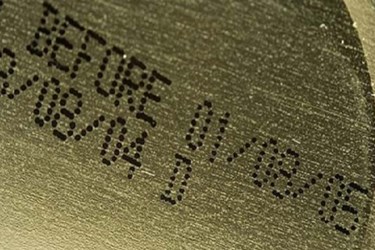Will Food Spoilage Smart Tags Render Best-By Dates Obsolete?
By Isaac Fletcher, contributing writer, Food Online

New nanotechnology could provide an effective replacement to best-by dates by gauging ambient temperature and accurately indicating when food has gone bad
A research team led by Chao Zhang of Peking University in Beijing, China has developed a color-coded smart tag that employs nanotechnology to indicate when packaged food is in danger of spoiling or already spoiled. The kind of technology would serve as an effective supplement or replacement to the current method of sell-by dates. While the sell-by date provides the consumer with some useful information, they operate on a good deal of guesswork. Although the guesses are highly informed and accurate in ideal storage conditions, if the storage conditions are worse than the determiners of the sell-by date intended, the system is thrown off. The smart tags are intended to address this since they are designed to react to the actual storage conditions rather than how the product might — or should — have been stored.
How Real Time Monitoring Can Improve Food Safety
Zhang states, “A real advantage is that when manufacturers, grocery store owners, and consumers do not know if the food has been unduly exposed to higher temperatures — which could cause unexpected spoilage — the tag still gives a reliable indication of the quality of the product.”
The tags are gel-like in texture, about the size of a corn kernel, safe, and even edible. They function by reacting to the ambient temperatures around them and change color to indicate when the product has become spoiled. Red indicates 100 percent fresh; green indicates 100 percent spoiled, and orange and yellow indicate the food’s quality is beginning to deteriorate. The research lab uses gold nanorods that are red, which is why red is used for fresh instead of green. In the tag there is also silver chloride and vitamin C which interact with the nanorods over time. The nanorods become coated in silver and have their composition and shape changed, thereby altering their color. The tags can be programmed to mimic all ambient temperatures and display when the food has gone bad, regardless of what a sell-by date may indicate.
Since temperature is a variable in the way the tags function, the tags change color at different rates depending on how they have been stored. The current version of the tags was developed using E. coli bacteria in milk at various temperatures as a reference model. Zhang comments that similar models could easily be created for other products. The tags are also incredibly inexpensive to produce. Despite using precious metals in their manufacturing, each tag only costs about $0.002 to produce. Zhang says that the process has been patented in China and the next step is finding a manufacturer to make production more practical.
